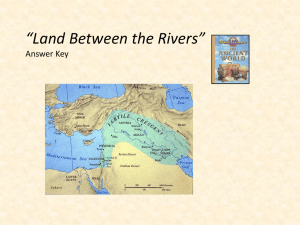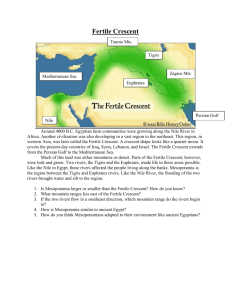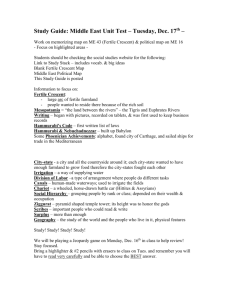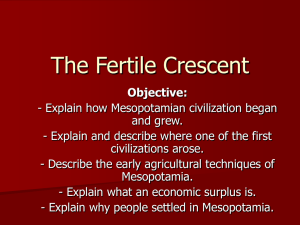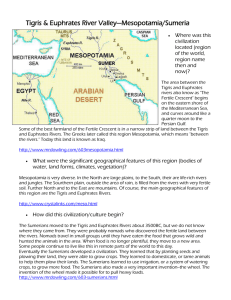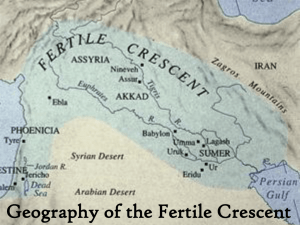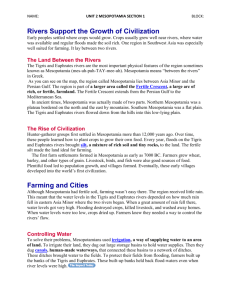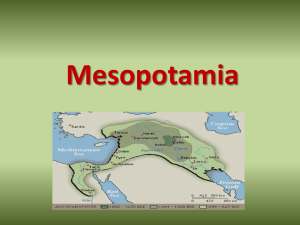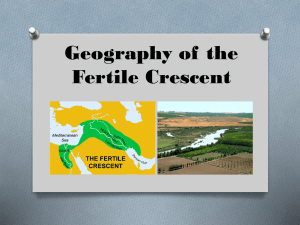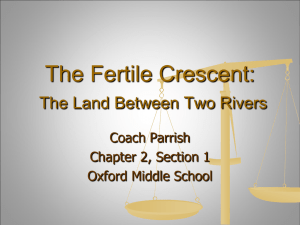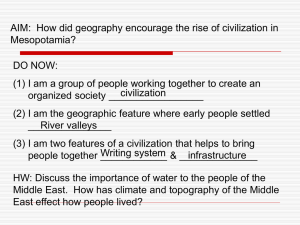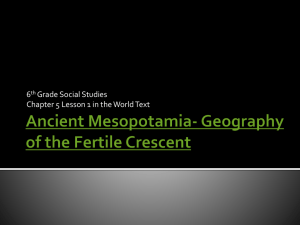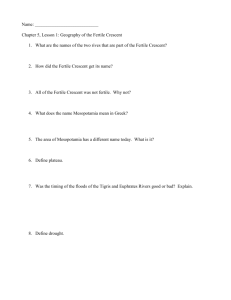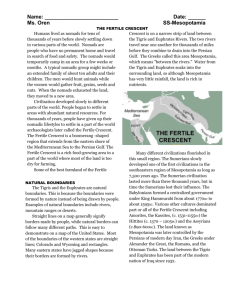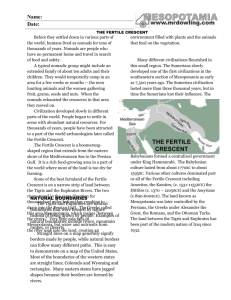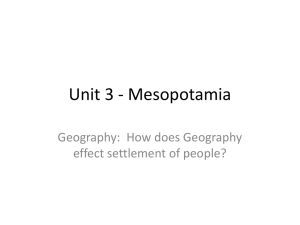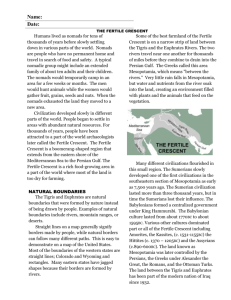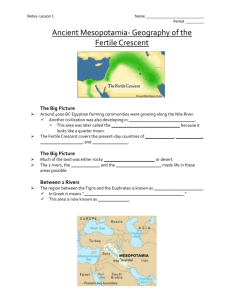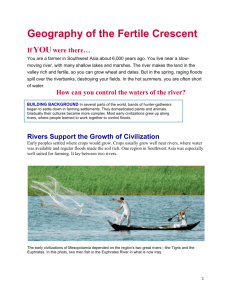Fertile Crescent
advertisement
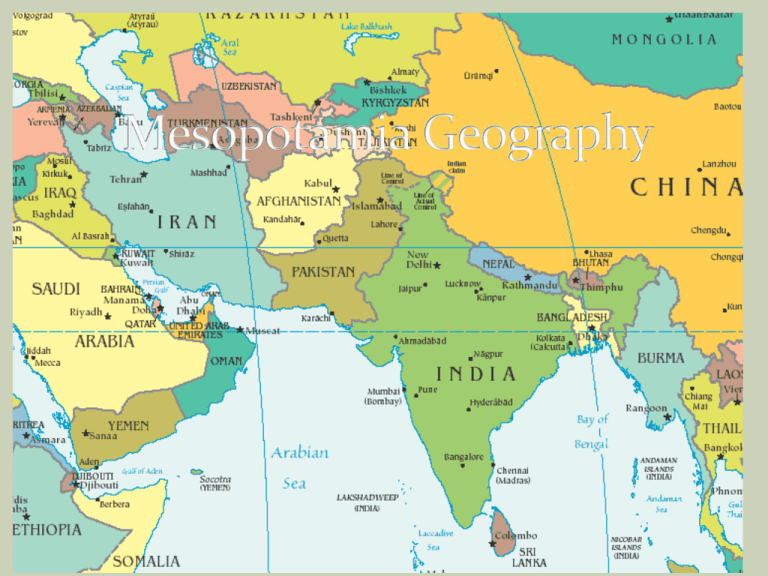
The first civilizations developed in Southwestern Asia in a crescent-shaped region around 3500 B.C. Civilizations- Groups of people who have a complex and organized society within a culture. This Region stretched from the eastern shores of the Mediterranean Sea between the Tigris and Euphrates Rivers. The Euphrates river is 1,740 miles long (2,800 km) The Tigris river is 1,150 miles long (1,850km) Both rivers are parallel to each other and flow in the Persian Gulf together. The region has fertile soil, which means the soil is rich in nutrients for crops. The Fertile Crescent is curved in shape, like a boomerang. Today, this land is part of the countries known as Iraq, Jordan, Syria, Lebanon, and Israel. Forests of cedar, oak, and pine were all near the Mediterranean Sea and provided a habitat for deer, sheep, and goats. In the south were grasslands, where wild pigs, oxen, and lions lived. In the eastern part of the region. The Fertile Crescent is bordered by the Zagros Mountains. Literally means “the land between the rivers.” Mesopotamia is the central plain in the Fertile Crescent. It is the land right in between the Tigris and the Euphrates rivers. The summers in Mesopotamia were long, hot, and dry. Temperatures would reach to 100 or nearly 120 degrees Fahrenheit. Rainfall would last from November to April but would vary from little to huge downpour. Unpredictable rain patterns would cause the riverbanks to overflow and flood plains. In other places of the Fertile Crescent, there was little rainfall to help water crops. The Euphrates and Tigris rivers were a perfect and permanent source of fresh water and fish. The rivers overflowed their banks on a regular basis, so their soil was fertile and was used for farming. The rivers were the perfect solution to unpredictable rainfall patterns. The Mesopotamian people developed Irrigation systems. Irrigation-Man made trenches and ditches that brought water from rivers to fields. This helped the people to control when and how much they watered their crops. The only real natural resources Mesopotamia had were fertile soil and water. People built their home and temples out of reeds and mud stones. The Mesopotamians would make these bricks by mixing mud and straw and then drying them in the sun. Most crops that were grown in Mesopotamia were: barley, millet, wheat, lentils, onions, garlic, turnips, lettuce, cucumbers, and apples. Soon the Mesopotamians were trading on the rivers with barley and woven cloth for timber and iron. Farming techniques improved in southern Mesopotamia and new settlers from northwestern and western parts of the Fertile Crescent came to settle on the banks of the rivers. By 3500 B.C., several city-states had grown in population. These city-states include Uruk, Kish, Lagash, Nipper, Umma, and Ur. City-state- A city that is an individual unit, complete with its own form of government and traditions. No single power controlled all the city-states.
